Discover The Wirecutter Show
The Wirecutter Show

The Wirecutter Show
Author: The New York Times
Subscribed: 14,442Played: 124,125Subscribe
Share
© 2024 The New York Times Co.
Description
The Wirecutter Show is a podcast offering expert advice on everyday products that will make your life better. Each week, co-hosts Christine Cyr Clisset and Caira Blackwell, alongside producer Rosie Guerin, speak with Wirecutter’s best-in-class journalists and other expert guests for actionable advice, surprising life hacks, and delightful product discoveries. From which stand-mixer will last you a lifetime, to the best way to travel with pets, to figuring out if your smart lock is spying on you, The Wirecutter Show gives you straightforward solutions based on years of rigorous and independent product testing by more than 140 Wirecutter journalists.
Subscribe today at nytimes.com/podcasts or on Apple Podcasts and Spotify. You can also subscribe via your favorite podcast app here https://www.nytimes.com/activate-access/audio?source=podcatcher. For more podcasts and narrated articles, download The New York Times app at nytimes.com/app.
Subscribe today at nytimes.com/podcasts or on Apple Podcasts and Spotify. You can also subscribe via your favorite podcast app here https://www.nytimes.com/activate-access/audio?source=podcatcher. For more podcasts and narrated articles, download The New York Times app at nytimes.com/app.
86 Episodes
Reverse
Buying used can be a great way to save money and find unique items—but it takes a sharp eye to find the real gems. And you need to be savvy to get a good price, as some vintage furniture and clothing can cost more than new items (and you can’t return them!). In this episode, we talk with Wirecutter senior staff writer Ivy Elrod, who has spent years navigating secondhand marketplaces. Ivy walks us through her best strategies for finding high-quality used furniture, clothing, and other items–from scouring Facebook Marketplace to mastering the art of negotiation. Plus, she gives us her best tips for envisioning your space before you start buying, and what to look for in photos to give you clues as to the quality of the items you’re looking for. This episode covers: Use visual tools to plan your space: Ivy recommends creating mood boards by creating a collage in Canva or Keynote, or even using the photo cut-out feature on your iPhone, to clip images of furniture you’re interested in and pasting them in pictures of your space to get a sense of how the pieces will look together. Where to shop for the best deals (and how to stay safe): For in-person finds, Ivy recommends local options like Facebook Marketplace, Craigslist, and estate sales. She also recommends always bringing a buddy to come with you.How to evaluate quality before you buy: Ivy says that simple photos showing wear and tear are a sign the seller is being honest. Buyers who are upfront about any damage, and who include reference photos to show the extent, are probably more trustworthy to engage with. Negotiate politely on price: “Haggling” is out, “negotiating” is in. Keep your ideal price in mind, be kind and ask for what you want, and be willing to walk away. Try language like “Would you consider X?” or “My budget is X, can we make that work?”Don’t be shy in inspecting the items in person: Ivy recommends asking questions and engaging with the item when you see it IRL. Flip up cushions, view it from every angle, check for signs of bedbugs and critters—make sure you’ve seen everything you need to see before you bring it home.Being late can actually get you a deal: At the end of estate sales, Ivy has found that sometimes sellers are more eager to give you a discount to avoid having to transport things back and forth.Be ready to act fast: When buying used, timing is arguably the most important factor. People more often than not just want things out of their space. If you’re able to be there immediately, chances are that they’ll want to sell to you. Additional Reading: How Our Decor Experts Find Worth-It Furniture on a Budget9 Things You Probably Shouldn’t Buy SecondhandHow Our Entertaining Experts Set a Full Table for $250I Vowed to Buy (Almost) Nothing New for My Baby. Here’s How I Did It.The Perks and Perils of Buying Vintage Audio Gear
We independently review everything we recommend. When you buy through our links, we may earn a commission. Learn more› Wirecutter Social and WebsiteInstagram: /wirecutterThreads: /@wirecutterTwitter: /wirecutterFacebook: /thewirecutterTikTok: /wirecutterLinkedIn: /nyt-wirecutterWebsite: https://www.nytimes.com/wirecutter/Newsletter: https://www.nytimes.com/wirecutter/newsletters/ The Wirecutter Show is executive produced by Rosie Guerin and produced by Abigail Keel.Engineering support from Maddy Masiello and Nick Pitman. Episodes are mixed by Catherine Anderson, Efim Shapiro, Rowan Niemisto, Sophia Lanman, and Sonia Herrero. Original music by Dan Powell, Marion Lozano, Elisheba Ittoop, and Diane Wong. Wirecutter’s deputy publisher and general manager is Cliff Levy. Ben Frumin is Wirecutter’s editor-in-chief. Hosted by Rosie Guerin, Caira Blackwell and Christine Cyr Clisset.Find edited transcripts for each episode here: The Wirecutter Show Podcast
Holiday shopping this season may look different than years past, as tariffs gradually increase prices on everything from electronics to kids’ toys. If you usually wait until Black Friday to find deep discounts, you may want to update your strategy this year. Wirecutter’s deputy editor Annemarie Conte joins us to discuss how tariffs are impacting the prices on a range of goods, and how to plan for your holiday shopping accordingly. You can find more of her reporting in Wirecutter’s Guide to Navigating Tariffs This Holiday Season.This episode covers:Price increases may sneak up on you this year: Wirecutter’s deals team has seen incremental price increases across many categories. “This is death by a thousand cuts,” Annemarie told us. “It may be a couple dollars here, a couple dollars there. As you're shopping, you may actually not notice, and then when you think about how much you've spent in the cumulative, you're like, ‘Where did all that go?’"Retailers are running out of existing inventory: Before the tariffs hit, many manufacturers and brands imported as much as possible to preempt extra costs. However, as they sell down this stock and need to import more, they will likely pass the increased costs on to customers. Why you probably shouldn’t wait for Black Friday: Wirecutter’s deals team doesn’t anticipate seeing as many deep discounts as in years past. If you find a good deal now, Annemarie advises against waiting.Beware of artificially-inflated prices: Retailers often inflate prices right before a deals event, such as Black Friday, so that they can then drastically cut the price during the event. For Amazon shopping, use tools like Keepa and CamelCamelCamel to track an item’s price history and how the price compares to past deals. For other sites, you can use Google Shopping to track prices. Shipping may be slower this year: There may be shipping delays, especially for international orders. If ordering online, make sure you’re giving yourself at least two weeks for delivery. Additional Listening:The Wirecutter Show Bonus Episode: Tariff Shopping Confusion Additional reading:Wirecutter’s Guide to Navigating Tariffs This Holiday SeasonWe Tracked Prices on 40 Wirecutter Picks for 60 Days. Here’s What We Learned.How to Avoid a Huge Customs Bill on a Cheap Online Order
We independently review everything we recommend. When you buy through our links, we may earn a commission. Learn more› Wirecutter Social and WebsiteInstagram: /wirecutterThreads: /@wirecutterTwitter: /wirecutterFacebook: /thewirecutterTikTok: /wirecutterLinkedIn: /nyt-wirecutterWebsite: https://www.nytimes.com/wirecutter/Newsletter: https://www.nytimes.com/wirecutter/newsletters/ The Wirecutter Show is executive produced by Rosie Guerin and produced by Abigail Keel.Engineering support from Maddy Masiello and Nick Pitman. Episodes are mixed by Catherine Anderson, Efim Shapiro, Rowan Niemisto, Sophia Lanman, and Sonia Herrero. Original music by Dan Powell, Marion Lozano, Elisheba Ittoop, and Diane Wong. Wirecutter’s deputy publisher and general manager is Cliff Levy. Ben Frumin is Wirecutter’s editor-in-chief. Hosted by Rosie Guerin, Caira Blackwell and Christine Cyr Clisset.Find edited transcripts for each episode here: The Wirecutter Show Podcast
If you’ve ever put off a home repair because you didn’t know where to start—or felt overwhelmed by the wall of tools at the hardware store—this episode is for you. In this Wirecutter Show bonus episode, we chat with senior staff writer and tool expert Doug Mahoney, who’s spent years testing everything from screwdrivers to power drills. Doug breaks down exactly which tools you need to build your first toolbox, what’s worth spending extra on, and how to know when you’re ready to move from hand tools to power tools. He also shares his favorite safety tips, the one tool every homeowner should have, and a few of his go-to picks for getting started. This episode covers: Why learning to use tools matters: Becoming handier saves money, gives you more control over your space, and makes your home feel like something you can shape—not just live in.Where to start if you have zero tools: Doug says the “trifecta” for beginners is simple: a screwdriver, a hammer, and a tape measure. Add a utility knife and pliers as you go, and you’ll be able to handle most small jobs in your home.Why pre-made toolkits aren’t worth it: Most ready-made toolsets are overpriced and filled with poor-quality gear. You’re better off buying a few solid, individual tools that last a lifetime.What to look for in quality tools: The cheapest hammer or screwdriver might technically work—but good tools are easier to use, feel better in your hand, and perform better under stress.When to level up to power tools: Once you’re ready to take on real repairs, a cordless drill should be your first power tool. Products we recommend:The best hammer: Estwing E3-16CThe best multi-bit screwdriver: Megapro 13-in-1 Ratcheting Driver 211R2C36RDThe best tape measure: Stanley PowerLock Tape Measure 25-FootThe best adjustable pliers: Irwin Vise-Grip GV10 10-Inch GrooveLock PliersThe best utility knife: Milwaukee 48-22-1502 Fastback Utility Knife with Blade StorageThe best cordless drill: DeWalt DCD701F2 Xtreme 12V Max Brushless 3/8 in. Drill/Driver KitThe best safety glasses: Radians MR0111ID MirageThe best respirator mask: 3M 8511 N95 Cool Flow Valve Particulate RespiratorThe best multi-tool: Leatherman Skeletool CX Additional listening:Nick Offerman’s Guide to Building Things That Last Additional reading:Nick Offerman Told Me That Swinging a Hammer Might Change My LifeThe 5 Best Hammers of 2025 The Best Multi-Bit Screwdriver The Best Tape MeasureThe 3 Best Adjustable Pliers of 2025The 4 Best Drills of 2025
We independently review everything we recommend. When you buy through our links, we may earn a commission. Learn more› Wirecutter Social and WebsiteInstagram: /wirecutterThreads: /@wirecutterTwitter: /wirecutterFacebook: /thewirecutterTikTok: /wirecutterLinkedIn: /nyt-wirecutterWebsite: https://www.nytimes.com/wirecutter/Newsletter: https://www.nytimes.com/wirecutter/newsletters/ The Wirecutter Show is executive produced by Rosie Guerin and produced by Abigail Keel.Engineering support from Maddy Masiello and Nick Pitman. Episodes are mixed by Catherine Anderson, Efim Shapiro, Rowan Niemisto, Sophia Lanman, and Sonia Herrero. Original music by Dan Powell, Marion Lozano, Elisheba Ittoop, and Diane Wong. Wirecutter’s deputy publisher and general manager is Cliff Levy. Ben Frumin is Wirecutter’s editor-in-chief. Hosted by Rosie Guerin, Caira Blackwell and Christine Cyr Clisset.Find edited transcripts for each episode here: The Wirecutter Show Podcast
Long before Nick Offerman became the mustached, straight-faced Ron Swanson of Parks and Recreation, he was a woodworker. Growing up in Minooka, Illinois, he described his childhood home as “Little House on the Prairie”—a place where everyone made their own things, carefully crafting furniture, clothing, and tools by hand. And as a skilled woodworker and general handy person, Nick appreciates good tools. This is fortuitous, because Wirecutter’s staff are similarly obsessed. For this episode, we sat down with Nick to talk about his new book Little Woodchucks, the joy of learning to build things, and the essential things he recommends that anyone should have in their toolbox. Our colleague Rose Lorre also sat down separately with Nick to discuss the foundational tool in his kit–a claw hammer–and documented her journey following his advice for buying a great hammer and learning to pound nails. Here are some of the conversation highlights: Hands-on work builds confidence and independence: Doing things with your hands—whether it’s woodworking, sewing, or fixing something around the house—teaches problem-solving and self-reliance.A few quality tools and materials are worth the investment: Cutting corners might save money upfront, but investing in tools or materials that last saves frustration and disappointment in the long run—and often makes the work itself more enjoyable.Keep it simple when building a toolkit: A few versatile, high-quality essentials can get you started and teach you the fundamentals before you invest more.The Estwing claw hammer is still Nick’s favorite tool of all: Nick is a longtime fan of Estwing hammers. Back in 2019, he even tweeted his recommendation for an Estwing, and linked to Wirecutter’s hammer guide.Discipline in one area feeds success in others: Patience, planning, and attention to detail learned in one pursuit—like woodworking—translate to other areas of life. Wirecutter Picks In Nick’s Workshop: The best hammer: Estwing E3-16C Nick says he also keeps a cordless drill, a multi-bit manual screwdriver, a set of wrenches, and a saw. Here are Wirecutter’s picks for these handy staples: The Best Cordless Drill: DeWalt DCD701F2 Xtreme 12V Max Brushless 3/8 in. Drill/Driver KitThe Best Multi-Bit Screwdriver: Megapro 13-in-1 Ratcheting Driver 211R2C36RDThe Best Hex Wrenches: Amazon Basics Hex Key Allen Wrench Set with Ball EndThe Best Adjustable Wrench: Channellock 8WCB WideAzz 8-Inch Adjustable WrenchThe Best Handsaw: Shark 10-2315 Carpentry Saw 15-Inch Other products Nick loves:The unsung hero in Nick’s workshop: Lie Nielsen Hand Planes Additional ReadingNick Offerman Told Me That Swinging a Hammer Might Change My LifeThe 5 Best Hammers of 2025 The Best Adjustable Wrench of 2025The 4 Best Hex Wrenches of 2025The Best Handsaw The 4 Best Drills of 2025The Best Multi-Bit Screwdriver More Nick Offerman:InstagramFacebookWebsiteNick’s new book: Little Woodchucks
We independently review everything we recommend. When you buy through our links, we may earn a commission. Learn more› Wirecutter Social and WebsiteInstagram: /wirecutterThreads: /@wirecutterTwitter: /wirecutterFacebook: /thewirecutterTikTok: /wirecutterLinkedIn: /nyt-wirecutterWebsite: https://www.nytimes.com/wirecutter/Newsletter: https://www.nytimes.com/wirecutter/newsletters/ The Wirecutter Show is executive produced by Rosie Guerin and produced by Abigail Keel.Engineering support from Maddy Masiello and Nick Pitman. Episodes are mixed by Catherine Anderson, Efim Shapiro, Rowan Niemisto, Sophia Lanman, and Sonia Herrero. Original music by Dan Powell, Marion Lozano, Elisheba Ittoop, and Diane Wong. Wirecutter’s deputy publisher and general manager is Cliff Levy. Ben Frumin is Wirecutter’s editor-in-chief. Hosted by Rosie Guerin, Caira Blackwell and Christine Cyr Clisset.Find edited transcripts for each episode here: The Wirecutter Show Podcast
If your computer has been slowing down or showing its age, you might not need to replace it just yet. Wirecutter senior staff writer Kimber Streams, who covers laptops and accessories, shares practical steps for reviving an old machine—and how to tell when it’s finally time for an upgrade. Kimber explains what causes computers to slow down over time, the simplest DIY fixes that can make a big difference, and what to look for if you do end up needing to shop for a replacement. See more of Kimber’s tips in this article on reviving an old computer. This episode covers:Cleaning up storage and files: Freeing up storage is one of the simplest ways to make a computer feel faster. Check what’s taking up space and remove any and all unnecessary files.Tidying apps and removing unused apps: Kimber recommends uninstalling unused apps that come pre-installed on your laptop, plus any unused browser extensions, that may be slowing down your system.Why you should update your computer’s operating system: Kimber emphasizes the importance of software updates for both security and performance.When it’s time to consider buying a new computer: If you’ve completed all of the housekeeping steps and find that your computer still isn’t functioning the way it should, it’s time to look at your budget and what you need in a new computer.Guidance for buying refurbished and secondhand computers: Kimber recommends only buying from manufacturer refurbished programs, and to be wary of retailer refurbs if you can’t see the item in person and judge the condition yourself. Look for a refurbished computer with the longest warranty possible. P.S. If you have a spill, we don’t recommend using rice to dry your tech. Here’s why! Products we recommend:Our favorite refurbished laptop: Apple MacBook Air (13-inch, M4, 2025)Our favorite Windows laptop: Lenovo IdeaPad Flex 5i Chromebook PlusOur favorite performance upgrade: Apple MacBook Air (M1, 2020)Our favorite online backup service: IDriveOur favorite lap desk: LapGear Designer Lap Desk Additional reading:How to Make Your Old Computer Feel New AgainThe 8 Best Laptops of 2025How to Shop for a Used Laptop or Desktop PCThe Best Cheap Laptops Under $500 for 2025 The 5 Best Windows Laptops of 20254 Simple Tips to Keep Your Tech Safe and Dry This Summer 2025Windows 10 Is Dead. But You Might Not Need a New Laptop Yet.
We independently review everything we recommend. When you buy through our links, we may earn a commission. Learn more› Wirecutter Social and WebsiteInstagram: /wirecutterThreads: /@wirecutterTwitter: /wirecutterFacebook: /thewirecutterTikTok: /wirecutterLinkedIn: /nyt-wirecutterWebsite: https://www.nytimes.com/wirecutter/Newsletter: https://www.nytimes.com/wirecutter/newsletters/ The Wirecutter Show is executive produced by Rosie Guerin and produced by Abigail Keel.Engineering support from Maddy Masiello and Nick Pitman. Episodes are mixed by Catherine Anderson, Efim Shapiro, Rowan Niemisto, Sophia Lanman, and Sonia Herrero. Original music by Dan Powell, Marion Lozano, Elisheba Ittoop, and Diane Wong. Wirecutter’s deputy publisher and general manager is Cliff Levy. Ben Frumin is Wirecutter’s editor-in-chief. Hosted by Rosie Guerin, Caira Blackwell and Christine Cyr Clisset.Find edited transcripts for each episode here: The Wirecutter Show Podcast
If you’ve ever wondered whether you should filter your drinking water, this is the episode for you. Wirecutter senior staff writer Tim Heffernan, who covers air and water filtration, shares practical steps for deciding whether to filter your water. Tim discusses the most common contaminants you should watch out for, how municipalities filter your drinking water, and when it might be worth ponying up for a water test. This episode covers:Why you should look up your annual drinking water quality report: Tim explains how every utility must publish an annual water-quality/consumer confidence report (CCR)-- a free first step toward understanding the quality of your drinking water. You can also look it up via the EPA site.When you may want to test your water for contaminants: If you’re concerned about what’s coming out of your tap, Tim recommends getting your water tested using a send-away lab kit. He’d skip at-home color-strip tests, which are often hard to read.Why living near a polluted area doesn’t mean your water will be polluted: The pressure in the pipes should help keep contaminants out. Contaminants in the water are more about your water source and how that water is treated.The pros and cons of different filters: Pitchers are cheap and convenient, but they clog and have short lifespans. Faucet and under-sink units use household water pressure for denser filtration and often remove more contaminants–but they can be more expensive overall. Products we recommend:Our favorite water pitcher: Brita Standard Everyday PitcherOur favorite under-sink filter: Aquasana AQ-5200Our favorite upgrade under-sink filter: Aquasana AQ-5300+ Max FlowOur favorite faucet water filter: Pur Plus Faucet Filtration SystemOur favorite water test kit: Tap Score Advanced City Water TestOur favorite water test kit for well water: Tap Score Advanced Well Water Test Additional reading:The Best Under-Sink Water Filter for 2025The 5 Best Water Filter Pitchers & Dispensers of 2025The Best Water Quality Test Kit for Your HomeThe Best Faucet-Mounted Water Filter of 2025 I’m Wirecutter’s Water-Quality Expert. I Don’t Filter My Water.
We independently review everything we recommend. When you buy through our links, we may earn a commission. Learn more› Wirecutter Social and WebsiteInstagram: /wirecutterThreads: /@wirecutterTwitter: /wirecutterFacebook: /thewirecutterTikTok: /wirecutterLinkedIn: /nyt-wirecutterWebsite: https://www.nytimes.com/wirecutter/Newsletter: https://www.nytimes.com/wirecutter/newsletters/ The Wirecutter Show is executive produced by Rosie Guerin and produced by Abigail Keel.Engineering support from Maddy Masiello and Nick Pitman. Episodes are mixed by Catherine Anderson, Efim Shapiro, Rowan Niemisto, Sophia Lanman, and Sonia Herrero. Original music by Dan Powell, Marion Lozano, Elisheba Ittoop, and Diane Wong. Wirecutter’s deputy publisher and general manager is Cliff Levy. Ben Frumin is Wirecutter’s editor-in-chief. Hosted by Rosie Guerin, Caira Blackwell and Christine Cyr Clisset.Find edited transcripts for each episode here: The Wirecutter Show Podcast
This week, we’re exploring how to travel for less, and in this episode we discuss how to smartly augment a travel budget with credit card points. Brian Kelly—founder of The Points Guy and author of How to Win at Travel–pulls back the curtain on exactly how these programs work, the crucial pitfalls to avoid, and the little-known strategies for scoring the best deals on flights and hotel rooms. For more affordable travel advice, don’t miss our earlier episode with Elaine Glusac (aka the Frugal Traveler). And find our recommended travel gear below. This episode covers:Why you should pay down debt first: The points game only works if you’re debt-free. Any interest you pay on a carried balance cancels out the value of the points you earn.How rewards programs are funded: Credit card companies primarily make money through an "interchange" fee (usually around 2%) paid by vendors on every purchase. The credit card company then gives a portion of this money back to you as rewards.How to maximize everyday purchases: Audit your monthly expenses (groceries, eating out, gas, etc) and get a card that offers the highest rewards on those purchases.Why you may want to prioritize “transferable” points: Cards that offer transferable points (from major banks) can be converted to many different airline and hotel partners, giving you maximum flexibility for travel.When it’s worth using awards tickets: Flights booked with an airline's rewards program are often fully refundable and changeable up until departure at no extra cost, unlike standard cash-fare tickets. ALSO: If you have a question about gifts, we want to hear from you for upcoming mini series! Send your question as a voice memo to thewirecuttershow@wirecutter.com. Additional reading:Secrets to Cheap Travel from NYT’s Frugal TravelerThe 6 Best Carry-On Luggage of 2025The 6 Best Carry-On Travel Backpacks for 2025The Best Suitcases for CheckingThe Best Gear for Travel in 2025
We independently review everything we recommend. When you buy through our links, we may earn a commission. Learn more› Wirecutter Social and WebsiteInstagram: /wirecutterThreads: /@wirecutterTwitter: /wirecutterFacebook: /thewirecutterTikTok: /wirecutterLinkedIn: /nyt-wirecutterWebsite: https://www.nytimes.com/wirecutter/Newsletter: https://www.nytimes.com/wirecutter/newsletters/ The Wirecutter Show is executive produced by Rosie Guerin and produced by Abigail Keel.Engineering support from Maddy Masiello and Nick Pitman. Episodes are mixed by Catherine Anderson, Efim Shapiro, Rowan Niemisto, Sophia Lanman, and Sonia Herrero. Original music by Dan Powell, Marion Lozano, Elisheba Ittoop, and Diane Wong. Wirecutter’s deputy publisher and general manager is Cliff Levy. Ben Frumin is Wirecutter’s editor-in-chief. Hosted by Rosie Guerin, Caira Blackwell and Christine Cyr Clisset.Find edited transcripts for each episode here: The Wirecutter Show Podcast
This week, we’re exploring how to travel for less. We dive into the best tried-and-true strategies for stretching your travel budget. Elaine Glusac, a longtime travel journalist andThe Frugal Traveler columnist at The New York Times, joins us to share her best money-saving hacks, from timing your flight purchases just right, to negotiating directly with Airbnb hosts. She also explains how to leverage under-the-radar resources like Going.com for finding cheap flights and Costco Travel for car rentals. Plus she shares how to navigate Black Friday travel deals for cruises, flights, and hotels. This episode covers:When to book flights for the best prices: Elaine breaks down the “sweet spots” for booking both domestic and international travel, plus why holidays require a different strategy.Why flexibility matters more than loyalty: Shifting your departure by just a day or two can save you money and stress—and sometimes matters more than which airline you fly.How to spot true airfare deals: Tools like Google Flights and Kayak alerts can help you track fares and avoid misleading “fake sales.”Why you should negotiate directly with hosts: Reaching out to Airbnb or Vrbo owners can unlock discounts you won’t find through the platform.When Black Friday travel sales are worth it: Some cruise lines and hotels run genuine deep discounts—but Elaine shares how to separate the hype from the real bargains. The Frugal Traveler Columns We Discussed: The Secret to Finding the Best Travel BargainsHow to Avoid Paying Vacation Rental FeesDriving the Alaska HighwayCredit Card Swipe Fees Are Going Down. Are Points Going With Them?Traveling Abroad? If You’re Paying With Dollars, Your Trip Is on Sale.Cheap Flights, Half-Price Cruises: This Travel Tuesday, Deals AboundGetting the Most Bang for Your Buck While Traveling OverseasJoin the Club, Save Some Money Additional reading:How The New York Times’s Frugal Traveler Packs for Any Trip ImaginableThe 3 Best Travel Backpacks of 2025 The 6 Best Carry-On Luggage of 2025The Best Suitcases for Checking Soft-Sided vs. Hard-Sided Suitcases: The Final Showdown
We independently review everything we recommend. When you buy through our links, we may earn a commission. Learn more› Wirecutter Social and WebsiteInstagram: /wirecutterThreads: /@wirecutterTwitter: /wirecutterFacebook: /thewirecutterTikTok: /wirecutterLinkedIn: /nyt-wirecutterWebsite: https://www.nytimes.com/wirecutter/Newsletter: https://www.nytimes.com/wirecutter/newsletters/ The Wirecutter Show is executive produced by Rosie Guerin and produced by Abigail Keel.Engineering support from Maddy Masiello and Nick Pitman. Episodes are mixed by Catherine Anderson, Efim Shapiro, Rowan Niemisto, Sophia Lanman, and Sonia Herrero. Original music by Dan Powell, Marion Lozano, Elisheba Ittoop, and Diane Wong. Wirecutter’s deputy publisher and general manager is Cliff Levy. Ben Frumin is Wirecutter’s editor-in-chief. Hosted by Rosie Guerin, Caira Blackwell and Christine Cyr Clisset.Find edited transcripts for each episode here: The Wirecutter Show Podcast
We’re planning a special episode with Vaughn Vreeland from the NYT Cooking Team all about COOKIES! Vaughn is coming out with a new cookie cookbook in October–so he’s the perfect person to answer your toughest cookie-baking questions. Are you wondering whether certain baking gear is worth the investment? Are you looking for a special cookie that will impress? Is there a recipe you want advice on? Let us know! Record a voice memo on your phone and tell us your first name, where you’re calling from, and what your cookie question is. Then email it to us thewirecuttershow@wirecutter.com. Your question may wind up getting answered on the show!
We independently review everything we recommend. When you buy through our links, we may earn a commission. Learn more› Wirecutter Social and WebsiteInstagram: /wirecutterThreads: /@wirecutterTwitter: /wirecutterFacebook: /thewirecutterTikTok: /wirecutterLinkedIn: /nyt-wirecutterWebsite: https://www.nytimes.com/wirecutter/Newsletter: https://www.nytimes.com/wirecutter/newsletters/ The Wirecutter Show is executive produced by Rosie Guerin and produced by Abigail Keel.Engineering support from Maddy Masiello and Nick Pitman. Episodes are mixed by Catherine Anderson, Efim Shapiro, Rowan Niemisto, Sophia Lanman, and Sonia Herrero. Original music by Dan Powell, Marion Lozano, Elisheba Ittoop, and Diane Wong. Wirecutter’s deputy publisher and general manager is Cliff Levy. Ben Frumin is Wirecutter’s editor-in-chief. Hosted by Rosie Guerin, Caira Blackwell and Christine Cyr Clisset.Find edited transcripts for each episode here: The Wirecutter Show Podcast
Chef and cookbook author Samin Nosrat, best known for Salt Fat Acid Heat, joins us to talk about her new book Good Things—and how she keeps cooking joyful, even in a small home kitchen. She shares the tools she relies on daily, the condiments that transform simple meals, and her approach to entertaining without burning out. This episode covers: How she organizes her tiny kitchen: Borrowing tricks from restaurant kitchens, Samin makes a small space efficient and inviting.The essential knives and sharpeners she recommends: Good blades (and the right sharpener) make prep faster, safer, and more fun.Tools she swears by for everyday cooking: From an immersion blender to a carbon steel pan, her kitchen MVPs do heavy lifting.When single-use tools are worth it: A food mill or Japanese mandoline can feel niche but save time and improve results.Condiments that elevate simple meals: Chili crisp, salsa macha, and preserved lemon paste turn basics into showstoppers.Her philosophy on entertaining: It’s about connection, not perfection—and choosing dishes that don’t leave you stuck in the kitchen. Also, Samin shared more tips for hosting a stress-free dinner party with Wirecutter kitchen writer Maki Yazawatrio. Wirecutter Picks in Samin's Kitchen: The Y peeler Samin reaches for daily: Kuhn Rikon Original Swiss PeelerThe sleek knife block in Samin’s small kitchen: Benchcrafted Mag-BlokThe spatula she can’t cook without: GIR Silicone SpatulaA handy and compact kitchen workhorse: Cuisinart Core Custom 4-Cup Mini Chopper Other Products Samin Loves: How she keeps pans spotless: Field Company Chainmail ScrubberA fancy at-home knife sharpener: Tormek Knife SharpenerOlive oil that supports a good cause: Seka Hills Olive OilAnother olive oil Samin counts on: California Olive RanchA special condiment Samin loves: Kuali Salsa Macha Samin says she also keeps a carbon steel pan, fish spatula, microplane, mandoline, immersion blender, and spice grinder in her kitchen for everyday use. Plus, a food mill for perfect mashed potatoes! Like us, she recommends home cooks start out with three basic knives: a chef’s knife, a serrated knife, and a paring knife. Here are Wirecutter’s picks for these handy kitchen staples. The Best Carbon Steel Pan Made In Carbon Steel Frying PanThe Best Fish Spatula: Winco Fish SpatulaThe Best Microplane Grater: Microplane Premium Classic Series ZesterThe Best Mandoline: Super BenrinerThe Best Immersion Blender: Braun MultiQuick 7 Immersion Hand Blender MQ7035The Best Food Mill: Oxo Good Grips Food MillThe Best Coffee Grinder (for grinding spices): OXO Brew Conical Burr Coffee GrinderWirecutter's advice on how to build your own knife kit (along with picks for all three knife types Samin discusses) Additional reading:Samin Nosrat's Tips for Hosting a Stress-Free Dinner PartyThe Best Olive Oil You Can Buy At the StoreLife’s Too Short for Bad Olive Oil Build Your Own Knife Set More Samin:Instagram: /ciaosaminFacebook: /samin.nosratWebsite: https://ciaosamin.com/Podcast: https://homecooking.show/Samin’s new book: Good Things
We independently review everything we recommend. When you buy through our links, we may earn a commission. Learn more› Wirecutter Social and WebsiteInstagram: /wirecutterThreads: /@wirecutterTwitter: /wirecutterFacebook: /thewirecutterTikTok: /wirecutterLinkedIn: /nyt-wirecutterWebsite: https://www.nytimes.com/wirecutter/Newsletter: https://www.nytimes.com/wirecutter/newsletters/ The Wirecutter Show is executive produced by Rosie Guerin and produced by Abigail Keel.Engineering support from Maddy Masiello and Nick Pitman. Episodes are mixed by Catherine Anderson, Efim Shapiro, Rowan Niemisto, Sophia Lanman, and Sonia Herrero. Original music by Dan Powell, Marion Lozano, Elisheba Ittoop, and Diane Wong. Wirecutter’s deputy publisher and general manager is Cliff Levy. Ben Frumin is Wirecutter’s editor-in-chief. Hosted by Rosie Guerin, Caira Blackwell and Christine Cyr Clisset.Find edited transcripts for each episode here: The Wirecutter Show Podcast
Carbon monoxide is a colorless, odorless gas that can seep from any fuel-burning appliance. If undetected, it can also be a silent killer–which is why most experts consider it crucial to have a CO detector in your home. Yet, many hotels, motels, and vacation houses aren’t required to have CO detectors.While the risk of CO poisoning on a trip is low compared to something like a car crash, it can still happen. In this episode, we talk with Wirecutter travel writer Maria Adelmann about why you may want to consider traveling with a portable CO detector. Maria explains what to look for in a detector and how it can help mitigate your risk. This episode covers:The risk of CO poisoning while traveling: Even though carbon monoxide poisoning is a leading cause of poison-related deaths in the US, only 14 US states have statues mandating CO detectors in temporary lodging, and these laws are not always comprehensive.A simple solution for avoiding CO poisoning: A portable, battery-operated carbon monoxide detector is a small, inexpensive, and easy way to get peace of mind and protect yourself and your family.Why you may mistake the symptoms of CO poisoning for other illnesses: CO poisoning can cause headaches, dizziness, and nausea and many people may think they have the flu, food poisoning, or even a hangover. Sick individuals may opt to recover by shutting themselves in their room–which would be the worst thing to do in the case of CO poisoning. Instead, they should get to fresh air as quickly as possible.Where to place a portable CO detector: Experts recommend placing CO detectors in sleeping areas, because that's where you'll be most affected. For an entire house, the EPA recommends putting one on every floor. Products we recommend:A travel-size CO detector: First Alert CO710 Carbon Monoxide Detector Additional reading:This Portable Travel CO Detector Could Save Your LifeWorried About Your Gas Stove? Here’s What to Do. The 3 Best Basic Smoke Alarms of 2025Correction: In the version of this episode that was originally published, we stated that when a carbon monoxide detector starts to beep at the end of its life, it’s because the battery is about to die. That is incorrect. The end-of-life alert we refer to, typically a series of chirps, indicates that the sensor is dying, not the battery.
We independently review everything we recommend. When you buy through our links, we may earn a commission. Learn more› Wirecutter Social and WebsiteInstagram: /wirecutterThreads: /@wirecutterTwitter: /wirecutterFacebook: /thewirecutterTikTok: /wirecutterLinkedIn: /nyt-wirecutterWebsite: https://www.nytimes.com/wirecutter/Newsletter: https://www.nytimes.com/wirecutter/newsletters/ The Wirecutter Show is executive produced by Rosie Guerin and produced by Abigail Keel.Engineering support from Maddy Masiello and Nick Pitman. Episodes are mixed by Catherine Anderson, Efim Shapiro, Rowan Niemisto, Sophia Lanman, and Sonia Herrero. Original music by Dan Powell, Marion Lozano, Elisheba Ittoop, and Diane Wong. Wirecutter’s deputy publisher and general manager is Cliff Levy. Ben Frumin is Wirecutter’s editor-in-chief. Hosted by Rosie Guerin, Caira Blackwell and Christine Cyr Clisset.Find edited transcripts for each episode here: The Wirecutter Show Podcast
This week, we get nerdy about sheets—why you might be unhappy with your current set, how to pick ones you’ll actually love, and the marketing scams to avoid. Jackie Reeve, Wirecutter’s in-house sheets expert, enlightens us on everything you need to know to invest in a great set you’ll be happy with for years. This episode covers:Percale vs sateen: Percale and sateen are terms that describe how sheets are woven, and the weave determines the feel of the fabric. Percale tends to be lighter and crisp (think nice hotel bedding), while sateen is woven to be drapier with a smooth, soft feel that hugs the body.Quality over thread count: Don’t let high thread counts fool you. While thread count describes the number of threads that fit into a square inch of fabric, retailers use hyper-inflated numbers as a marketing ploy. Instead, seek out high-quality cotton. Look for terms like “100% cotton,” “long-staple cotton,” and “extra-long staple cotton” on packaging. Good quality percale generally has 250 to 300 thread count, while sateen ranges between 400 and 600 (higher numbers are likely a gimmick).Judge sheets only after washing them: New sheets are treated with conditioners and finishes that make them feel soft out of the package. To get to the real feel of the fabric, you need to wash them a few times.Certifications and return policies: Certifications like Oeko-Tex guarantee that the fabric has been tested for certain harmful substances. Since you need to wash sheets to determine their true true feel, a good return policy allows you to return them if you don’t end up liking the texture. Products we recommend:The best percale sheets: 280-Thread-Count Pima Cotton Percale SheetsThe best sateen sheets: JCPenney's Wrinkle Guard’s 400 Thread Count Sateen SheetsThe best linen sheets: Cultiver Linen Sheet SetThe best flannel sheets: L.L.Bean Ultrasoft Comfort Flannel Sheet SetJackie loves: Swoveralls Additional reading:The Best SheetsThe Best Cotton SheetsBest Linen SheetsBest Flannel SheetsWhat Is the Best Thread Count for Sheets?
We independently review everything we recommend. When you buy through our links, we may earn a commission. Learn more› Wirecutter Social and WebsiteInstagram: /wirecutterThreads: /@wirecutterTwitter: /wirecutterFacebook: /thewirecutterTikTok: /wirecutterLinkedIn: /nyt-wirecutterWebsite: https://www.nytimes.com/wirecutter/Newsletter: https://www.nytimes.com/wirecutter/newsletters/ The Wirecutter Show is executive produced by Rosie Guerin and produced by Abigail Keel.Engineering support from Maddy Masiello and Nick Pitman. Episodes are mixed by Catherine Anderson, Efim Shapiro, Rowan Niemisto, Sophia Lanman, and Sonia Herrero. Original music by Dan Powell, Marion Lozano, Elisheba Ittoop, and Diane Wong. Wirecutter’s deputy publisher and general manager is Cliff Levy. Ben Frumin is Wirecutter’s editor-in-chief. Hosted by Rosie Guerin, Caira Blackwell and Christine Cyr Clisset.Find edited transcripts for each episode here: The Wirecutter Show Podcast
Apple’s September iPhone event usually comes and goes with only minor tweaks to the lineup. This year feels a little different. Alongside the iPhone 17, 17 Pro, and 17 Pro Max, Apple unveiled its first-ever iPhone Air—a super-thin model that promises Pro-level features without the massive price tag. In this bonus episode, Christine talks with senior staff writer Brenda Stolyar, who’s been testing the new phones all week. They dig into what’s exciting, what’s lacking, and why upgrading may not be the best move for everyone. Plus, we cover the iOS 26 update, which brings fresh design touches, handy new tools, and real improvements to everyday use. This episode covers:Why the iPhone Air feels different from past models: It’s Apple’s thinnest phone yet, but that slim design means trade-offs in durability and battery life.What the camera upgrades really offer: The Pro models now have a zoom that lets you look 5 times closer without the blur, but most people won’t notice big differences in everyday shots.What to expect from battery life: Brenda tested the lineup for a week and found the Air drains faster than Apple’s flagship phones.Why the Pro Max isn’t the best buy for most people: It’s powerful, but bulkier and more expensive than what most users actually need.How iOS 26 changes the feel of your phone: The new “liquid glass” design, upgraded Messages, and live translations make old phones feel refreshed.Why updating your software is worth it: Security patches and performance improvements mean you don’t need to buy new hardware to get a faster phone. Additional reading: iOS 26 Is Here. These Are the Best New Features Which iPhone Should I Get?Stop Charging Your Phone to 100% — And More Tips to Make Your Phone Last LongerApple’s iPhone 17 Event Recap: New iPhones, Apple Watches, and AirPods
We independently review everything we recommend. When you buy through our links, we may earn a commission. Learn more› Wirecutter Social and WebsiteInstagram: /wirecutterThreads: /@wirecutterTwitter: /wirecutterFacebook: /thewirecutterTikTok: /wirecutterLinkedIn: /nyt-wirecutterWebsite: https://www.nytimes.com/wirecutter/Newsletter: https://www.nytimes.com/wirecutter/newsletters/ The Wirecutter Show is executive produced by Rosie Guerin and produced by Abigail Keel.Engineering support from Maddy Masiello and Nick Pitman. Episodes are mixed by Catherine Anderson, Efim Shapiro, Rowan Niemisto, Sophia Lanman, and Sonia Herrero. Original music by Dan Powell, Marion Lozano, Elisheba Ittoop, and Diane Wong. Wirecutter’s deputy publisher and general manager is Cliff Levy. Ben Frumin is Wirecutter’s editor-in-chief. Hosted by Rosie Guerin, Caira Blackwell and Christine Cyr Clisset.Find edited transcripts for each episode here: The Wirecutter Show Podcast
You’ve likely heard the adage that "sitting is the new smoking." Basically, that sitting all day at work or elsewhere is one of the most harmful things you can do for your health. But is it really all that bad? In this episode, we talk with Molly Mirhashem, an editor from the New York Times Well Desk, about the health risks of being too sedentary, what you should know about “dead butt syndrome,” and what you should be doing if you have a desk job. Then we talk with Wirecutter's home office writer Arriana Vasquez, who shares what you should know about standing desks, walking pads, and other office gear that can help you stay more active during the workday. This episode covers:The real health risks of too much sitting: Molly shares how sitting for more than even 30 minutes can increase the risk of chronic diseases, such as heart disease and diabetes, and contribute to pain in your muscles and joints.Why you should schedule “movement snacks” in the day: Experts recommend getting up to stand or move around at least every 30 to 60 minutes. Even if you work out during the day, it’s important that you break up long periods of sitting as much as you can.Simple tips to get moving: We provide practical advice for incorporating movement into your daily routine without needing to invest in expensive equipment.The best office gear for movement: We discuss different types of home office equipment, including standing desks, walking pads, and under-desk ellipticals, and explain who each one is best for. Products we recommend:Our favorite standing desk: Uplift V2 Standing DeskOur favorite standing desk converter: FlexiSpot AlcoveRiser Standing Desk Converter M7Our favorite walking Pads: Goplus 2 in 1 Folding Treadmill and GoYouth 2 in 1 Under Desk Electric TreadmillOur favorite balance board: Fezibo Balance BoardArrianna’s favorite stepper: Sunny Health & Fitness Mini StepperArrianna also likes her Sunny Health & Fitness Mini Stepper and as of this recording was testing the Cubii JR1, Cubii Move, Cursor, and Putnen ellipticals. Additional Reading: Tight Hips? These Moves Can Help.The 3 Best Standing Desks in 2025The 3 Best Standing Desk Converters of 2025You’re Probably Standing at Your Standing Desk Wrong. We Can Help.The 2 Best Under-Desk Treadmills of 2025
We independently review everything we recommend. When you buy through our links, we may earn a commission. Learn more› Wirecutter Social and WebsiteInstagram: /wirecutterThreads: /@wirecutterTwitter: /wirecutterFacebook: /thewirecutterTikTok: /wirecutterLinkedIn: /nyt-wirecutterWebsite: https://www.nytimes.com/wirecutter/Newsletter: https://www.nytimes.com/wirecutter/newsletters/ The Wirecutter Show is executive produced by Rosie Guerin and produced by Abigail Keel.Engineering support from Maddy Masiello and Nick Pitman. Episodes are mixed by Catherine Anderson, Efim Shapiro, Rowan Niemisto, Sophia Lanman, and Sonia Herrero. Original music by Dan Powell, Marion Lozano, Elisheba Ittoop, and Diane Wong. Wirecutter’s deputy publisher and general manager is Cliff Levy. Ben Frumin is Wirecutter’s editor-in-chief. Hosted by Rosie Guerin, Caira Blackwell and Christine Cyr Clisset.Find edited transcripts for each episode here: The Wirecutter Show Podcast
Trader Joe’s is more than a grocery store; it’s a cultural phenomenon with a fiercely loyal fan base. But with shelves full of ever-changing products, which ones are actually worth the hype? In this episode, associate staff writer Antara Sinha on the kitchen team shares Wirecutter’s picks for the 18 best Trader Joe’s items, explains how TJ’s keeps prices low, and reveals why your favorite snack might disappear forever. She also gives insider tips on navigating seasonal drops and finding alternatives at local markets. This episode covers:What’s actually worth buying at Trader Joe’s: After tasting over 70 snacks, frozen meals, and pantry staples, Antara Sinha shares Wirecutter’s top 18 picks—and why they stand out in a sea of seasonal gimmicks.How Trader Joe’s keeps prices low: Learn how the chain uses white-labeling and avoids slotting fees to make you feel like you’re getting gourmet products at bargain prices.Why your favorite item disappears without warning: We reveal the business strategy behind sudden product discontinuations (and how to spot them coming).The secret behind TJ’s cult following: Explore how the store’s “treasure hunt” vibe, quirky packaging, and rotating seasonal drops make grocery shopping feel like an event.How to stock up and find dupes: Insider tips on when to buy multiples, how to track seasonal launches, and what to do if your favorite Trader Joe's snack vanishes. Products we recommend:A delicious rice roll from the freezer aisle: Trader Joe’s KimbapA zingy, zesty tortilla chip reminiscent of Taki’s: Trader Joe’s Chili & Lime Flavored Rolled Corn Tortilla ChipsA crowd-pleasing cheddar: Trader Joe’s Unexpected Cheddar CheeseA plush cake for a birthday or any day: Trader Joe's Dark Chocolate Ganache Mini Sheet Cake Read about all the products Antara and the team liked best: 18 Best Trader Joe’s Foods: Our Favorite Things
We independently review everything we recommend. When you buy through our links, we may earn a commission. Learn more› Wirecutter Social and WebsiteInstagram: /wirecutterThreads: /@wirecutterTwitter: /wirecutterFacebook: /thewirecutterTikTok: /wirecutterLinkedIn: /nyt-wirecutterWebsite: https://www.nytimes.com/wirecutter/Newsletter: https://www.nytimes.com/wirecutter/newsletters/ The Wirecutter Show is executive produced by Rosie Guerin and produced by Abigail Keel.Engineering support from Maddy Masiello and Nick Pitman. Episodes are mixed by Catherine Anderson, Efim Shapiro, Rowan Niemisto, Sophia Lanman, and Sonia Herrero. Original music by Dan Powell, Marion Lozano, Elisheba Ittoop, and Diane Wong. Wirecutter’s deputy publisher and general manager is Cliff Levy. Ben Frumin is Wirecutter’s editor-in-chief. Hosted by Rosie Guerin, Caira Blackwell and Christine Cyr Clisset.Find edited transcripts for each episode here: The Wirecutter Show Podcast
Fall can be bittersweet—you may be coming home from vacation and settling back into your routines, but you also want to soak up the last of the warm weather before the winter comes. An e-bike might seem like a tempting compromise for an affordable, but adventurous and outdoorsy commute. In this bonus episode, Wirecutter Senior Editor and bike expert Chris Ryan tells us what an e-bike is, which kind you probably want to look for, and what common safety and repairability issues you’ll want to be aware of before you buy. This episode covers: What e-bikes are good for: They’re a great way to commute quickly without getting sweaty. They can also be an affordable alternative to a second car and can help people with mobility issues get back into cycling.What to know before you buy: E-bikes are heavy, so figure out how you'll store and maneuver one at home and at your destination. You'll also want to decide between a regular or a cargo e-bike, which is built to carry kids or groceries.Why you should buy from a local bike shop: They’re complex machines and require more frequent maintenance than regular bikes. It's a good idea to have a local professional you can go to for service, repairs, and support.Why buying a cheap replacement battery can be a fire hazard: It’s dangerous to buy cheap, off-brand replacement batteries. Low-cost batteries often lack a Battery Management System (BMS), which prevents them from overheating and catching fire. Always buy a replacement battery from the original manufacturer.How to protect your investment: E-bikes can be expensive. Check if your homeowners or renters insurance covers e-bikes, and if not, consider a separate policy. You should also register your bike with a nonprofit like bikeindex.org, which can help you get it back if it’s ever stolen. Products we recommend: The best e-bike for most commuters: Specialized Globe Haul STThe best e-bike for work and play: Trek Verve+ 3 Additional reading:The 2 Best Ebikes for Commuters of 2025The 5 Best Bike Helmets for Commuters in 2025The 5 Best Kids Bike Helmets of 2025
We independently review everything we recommend. When you buy through our links, we may earn a commission. Learn more› Wirecutter Social and WebsiteInstagram: /wirecutterThreads: /@wirecutterTwitter: /wirecutterFacebook: /thewirecutterTikTok: /wirecutterLinkedIn: /nyt-wirecutterWebsite: https://www.nytimes.com/wirecutter/Newsletter: https://www.nytimes.com/wirecutter/newsletters/ The Wirecutter Show is executive produced by Rosie Guerin and produced by Abigail Keel.Engineering support from Maddy Masiello and Nick Pitman. Episodes are mixed by Catherine Anderson, Efim Shapiro, Rowan Niemisto, Sophia Lanman, and Sonia Herrero. Original music by Dan Powell, Marion Lozano, Elisheba Ittoop, and Diane Wong. Wirecutter’s deputy publisher and general manager is Cliff Levy. Ben Frumin is Wirecutter’s editor-in-chief. Hosted by Rosie Guerin, Caira Blackwell and Christine Cyr Clisset.Find edited transcripts for each episode here: The Wirecutter Show Podcast
Oral health is about more than just a pretty smile; it's also connected to your overall health and well-being. In this episode, senior staff writer and toothbrush fanatic Nancy Redd explains how to brush properly, whether a manual or electric toothbrush is right for you, and how to find the best toothbrush for your family, no matter the budget. She shares surprising tips about oral hygiene and how to get kids excited about taking care of their teeth. And don’t forget to check out our video guide on how to properly brush your teeth. This episode covers: Why oral hygiene is so important: Brushing for 2 minutes is key to a healthy mouth. Poor oral hygiene can affect your overall health.Electric vs. manual: A manual toothbrush is just as effective as an electric one if you brush for a full two minutes. The benefit of an electric toothbrush is its built-in timer, which ensures you brush long enough.Two types of electric toothbrushes: The top-rated Oral-B and Sonicare models differ in how they clean. Oral-B toothbrushes use an oscillating motion (a spinning, round head), while Sonicare models use a vibrating motion (a brush-shaped head that moves back and forth). If one is uncomfortable, try the other.Gentle toothbrushes: For a more gentle clean, consider a kid's electric toothbrush. They have a softer, smaller head and a milder vibration that's more comfortable for sensitive teeth and gums.Water flossers: If you have trouble flossing, a water flosser can be a great alternative. It uses a pressurized stream of water to blast away gunk from your teeth. Products we recommend: The best oscillating electric toothbrush: Oral-B Pro 1000A quieter, vibrating brush with more expensive refills: Philips Sonicare 4100The best kids electric toothbrush (also good for adults with sensitive teeth): Philips Sonicare for Kids Design a Pet EditionThe best countertop water flosser: Waterpik IonThe best cordless water flosser: Philips Sonicare Power Flosser 3000 Cordless Additional reading:The 2 Best Electric Toothbrushes of 2025The 2 Best Electric Toothbrushes for Kids in 2025Why You Should Avoid Knockoff Oral-B and Philips Sonicare Brush HeadsThe 3 Best Water Flossers of 2025
We independently review everything we recommend. When you buy through our links, we may earn a commission. Learn more› Wirecutter Social and WebsiteInstagram: /wirecutterThreads: /@wirecutterTwitter: /wirecutterFacebook: /thewirecutterTikTok: /wirecutterLinkedIn: /nyt-wirecutterWebsite: https://www.nytimes.com/wirecutter/Newsletter: https://www.nytimes.com/wirecutter/newsletters/ The Wirecutter Show is executive produced by Rosie Guerin and produced by Abigail Keel.Engineering support from Maddy Masiello and Nick Pitman. Episodes are mixed by Catherine Anderson, Efim Shapiro, Rowan Niemisto, Sophia Lanman, and Sonia Herrero. Original music by Dan Powell, Marion Lozano, Elisheba Ittoop, and Diane Wong. Wirecutter’s deputy publisher and general manager is Cliff Levy. Ben Frumin is Wirecutter’s editor-in-chief. Hosted by Rosie Guerin, Caira Blackwell and Christine Cyr Clisset.Find edited transcripts for each episode here: The Wirecutter Show Podcast
More than 100 million Americans are exposed to unhealthy levels of noise daily. To help you protect yourself and those you love, we’re re-airing this episode on how to determine if you’re at risk of hearing loss and what you can do about it. Lauren Dragan, Wirecutter’s longtime senior writer covering headphones and audio equipment, walks us through the health issues linked to noise pollution, how to find out if you’re exposed to too much noise, and specific ways to reduce sounds at home, while commuting, or in noisier situations (like concerts or parties). Lauren shares her favorite headphones, from noise-canceling headphones to sleep headphones. And she recommends specific ear muffs and ear plugs for adults, kids, and babies. Lauren also reveals how to use various frequencies of noise—like brown or pink noise—to block out irritating sounds that may be bothering you. Products we recommend:Gear to help you monitor sound levels: Apple Watch with sound metering: Apple Watch Series 10 and Apple Watch SE (2nd generation)An app for any phone to monitor sound levels: NIOSH Sound Level Meter Everyday protection options for your ears: Earplugs for concerts or other loud moments: Loop Experience 2 or Loop SwitchNoise cancelling earbuds: Sony WF-1000XM5Noise cancelling over-ear headphones: Bose Noise Canceling Headphones 700Noise Isolating tips for most earbuds: Comply ear tips Headphones for sleeping: AcousticSheep SleepPhones WirelessSoundcore sleep A20 Protecting little ears: Earmuffs for babies: Ems for Kids Baby EarmuffsEarmuffs for kids and teens: Muted EarmuffsEarplugs for kids and teens: Loop kidsNoise cancelling headphones for kids: Puro Sound Labs PuroQuiet-Plus Lauren loves: Bearaby Cotton Napper Additional reading:The 4 Best Noise-Cancelling Headphones of 2024 The Best Sleep Headphones (But We Hoped for Better)The 3 Best Earplugs for Concerts of 2024 The 5 Best Kids Headphones of 2024The 4 Best Wireless Bluetooth Earbuds of 2024 Noise-Induced Hearing Loss in Kids Is a Growing Problem. Here’s How to Protect Little Ears. Lauren DraganInstagram: /laurendraganBluesky: /@laurendragan.bsky.social
We independently review everything we recommend. When you buy through our links, we may earn a commission. Learn more› Wirecutter Social and WebsiteInstagram: /wirecutterThreads: /@wirecutterTwitter: /wirecutterFacebook: /thewirecutterTikTok: /wirecutterLinkedIn: /nyt-wirecutterWebsite: https://www.nytimes.com/wirecutter/Newsletter: https://www.nytimes.com/wirecutter/newsletters/ The Wirecutter Show is executive produced by Rosie Guerin and produced by Abigail Keel.Engineering support from Maddy Masiello and Nick Pitman. Episodes are mixed by Catherine Anderson, Efim Shapiro, Rowan Niemisto, Sophia Lanman, and Sonia Herrero. Original music by Dan Powell, Marion Lozano, Elisheba Ittoop, and Diane Wong. Wirecutter’s deputy publisher and general manager is Cliff Levy. Ben Frumin is Wirecutter’s editor-in-chief. Hosted by Rosie Guerin, Caira Blackwell and Christine Cyr Clisset.Find edited transcripts for each episode here: The Wirecutter Show Podcast
Using a bidet may seem a little intimidating to some, but to others it's a way of life. In this episode, senior staff writer and bidet-convert Doug Mahoney explains why these modern fixtures that wash your bum are a game-changer for hygiene. He shares how they work, what to look for when buying one, and his top recommendations for every budget. This episode covers: How to choose between cold and warm-water bidets: They each have their pros and cons. Cold ones are the cheapest and easiest to install, while warm ones are more expensive and offer a luxury experience. What to know about installation: If you can install a regular toilet seat, you can install a cold-water bidet. Warm water bidets are a little trickier, and require access to an outlet. You’ll also want to make sure your toilet has an accessible water shutoff valve.Why it’s worth paying for a reliable brand: Given a bidet is a plumbing fixture, you should buy from a trusted brand, like Toto or Brondell. These companies tend to have reliable products that will last–and that will be less likely to cause leaks and other issues. Why bidets are great for everyone (including those with accessibility issues): A good bidet can make anyone feel cleaner, and they’re particularly helpful for people who have mobility issues – whether that’s a potty training kid, someone recovering from surgery, or an older adult who wants to live longer independently. Products We Recommend: The best bidet: Toto Washlet C5A cheaper Toto with slightly less style: Toto Washlet C2Our new favorite bidet: Toto S5 WashletA cheaper version of our new favorite: Toto S2A great cold water model that replaces your toilet seat: Brondell EcoSeat S101 Non-Electric Bidet SeatA great cold water model to use with an existing toilet seat: Bio Bidet SlimEdge Attachment Additional reading:The 6 Best Bidet Toilet Seats or Washlets of 2025How to Clean A BidetI’ve Installed 25+ Bidets in My Home. Here Are My Tips for Doing It Right.
We independently review everything we recommend. When you buy through our links, we may earn a commission. Learn more› Wirecutter Social and WebsiteInstagram: /wirecutterThreads: /@wirecutterTwitter: /wirecutterFacebook: /thewirecutterTikTok: /wirecutterLinkedIn: /nyt-wirecutterWebsite: https://www.nytimes.com/wirecutter/Newsletter: https://www.nytimes.com/wirecutter/newsletters/ The Wirecutter Show is executive produced by Rosie Guerin and produced by Abigail Keel.Engineering support from Maddy Masiello and Nick Pitman. Episodes are mixed by Catherine Anderson, Efim Shapiro, Rowan Niemisto, Sophia Lanman, and Sonia Herrero. Original music by Dan Powell, Marion Lozano, Elisheba Ittoop, and Diane Wong. Wirecutter’s deputy publisher and general manager is Cliff Levy. Ben Frumin is Wirecutter’s editor-in-chief. Hosted by Rosie Guerin, Caira Blackwell and Christine Cyr Clisset.Find edited transcripts for each episode here: The Wirecutter Show Podcast
If you’ve ever suspected your smart devices are spying on you, you’re right. In this episode, Jon Chase, Wirecutter's supervising editor for smart home coverage, reveals how even everyday devices you may not consider "smart" are monitoring you. They’re collecting data to build a profile that can then be sold to the highest bidder. The conversation covers: The devices collecting your data: Any device connected to the internet can collect data. This isn’t necessarily malicious; a smart thermostat, for instance, collects data to heat your home more efficiently.How your devices build a profile: Devices use your IP address, online activity, location, and even associations with other people to compile a detailed profile. This profile is often sold to the highest bidder for various reasons.How your smart TV builds on this profile: Modern TVs use automatic content recognition (ACR) to screenshot your screen every few seconds, adding to your data profile. Data brokers mine this info.How to protect your data: Jon shares practical, actionable steps to keep your data safe. He provides specific tips for adjusting privacy settings making more informed choices about the devices you bring home. Products we recommend:Best streaming device if you you want to avoid ACR: Apple TV 4KJon’s favorite power washer: Ryobi RY142500 Brushless 2500 PSI Pressure Washer Additional reading:Yes, Your TV Is Probably Spying on You. Your Fridge, Too. Here’s What They Know.The Best Data Removal ServicesI Tried, and Failed, to Disappear from the InternetCan You Really Disappear Online?
We independently review everything we recommend. When you buy through our links, we may earn a commission. Learn more› Wirecutter Social and WebsiteInstagram: /wirecutterThreads: /@wirecutterTwitter: /wirecutterFacebook: /thewirecutterTikTok: /wirecutterLinkedIn: /nyt-wirecutterWebsite: https://www.nytimes.com/wirecutter/Newsletter: https://www.nytimes.com/wirecutter/newsletters/ The Wirecutter Show is executive produced by Rosie Guerin and produced by Abigail Keel.Engineering support from Maddy Masiello and Nick Pitman. Episodes are mixed by Catherine Anderson, Efim Shapiro, Rowan Niemisto, Sophia Lanman, and Sonia Herrero. Original music by Dan Powell, Marion Lozano, Elisheba Ittoop, and Diane Wong. Wirecutter’s deputy publisher and general manager is Cliff Levy. Ben Frumin is Wirecutter’s editor-in-chief. Hosted by Rosie Guerin, Caira Blackwell and Christine Cyr Clisset.Find edited transcripts for each episode here: The Wirecutter Show Podcast




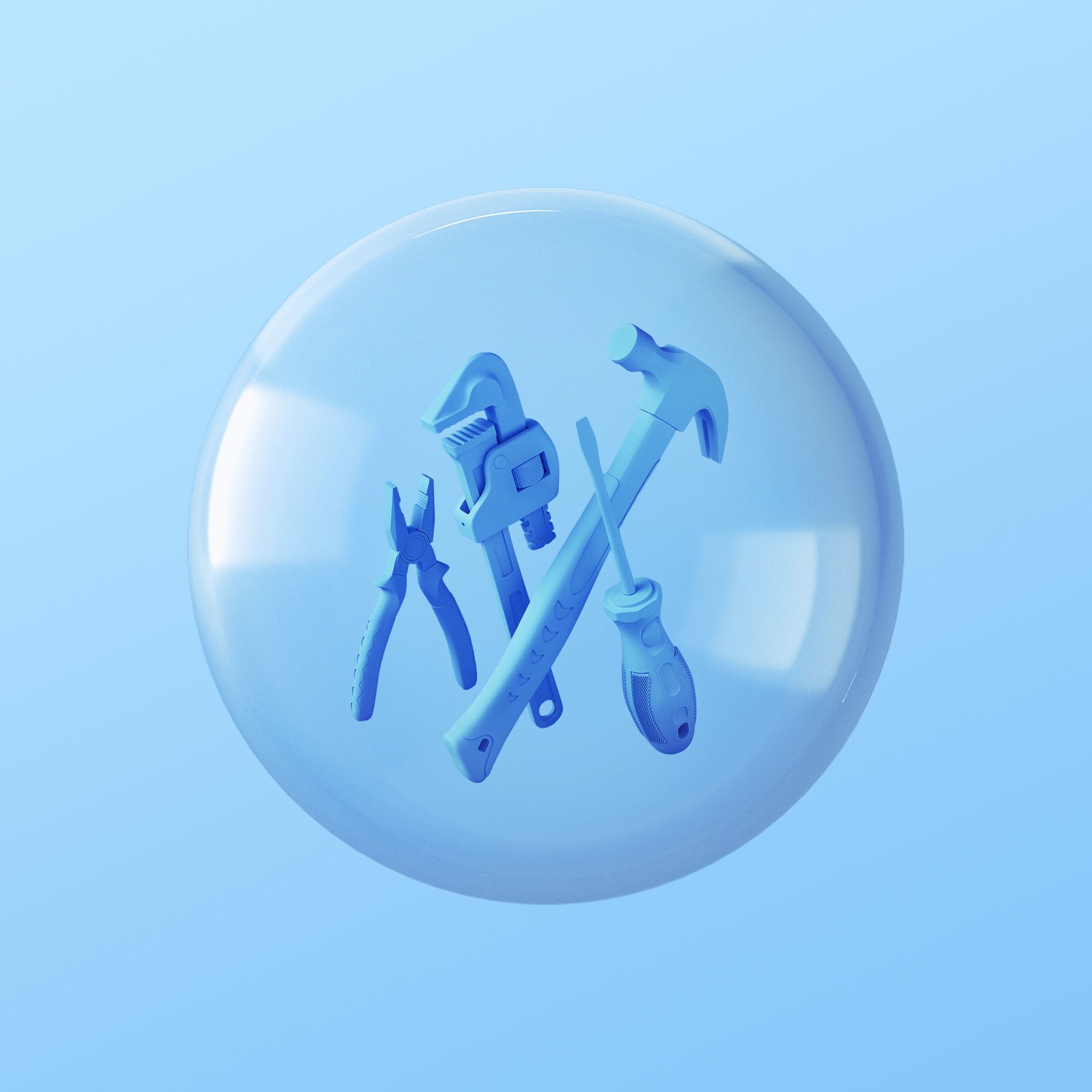

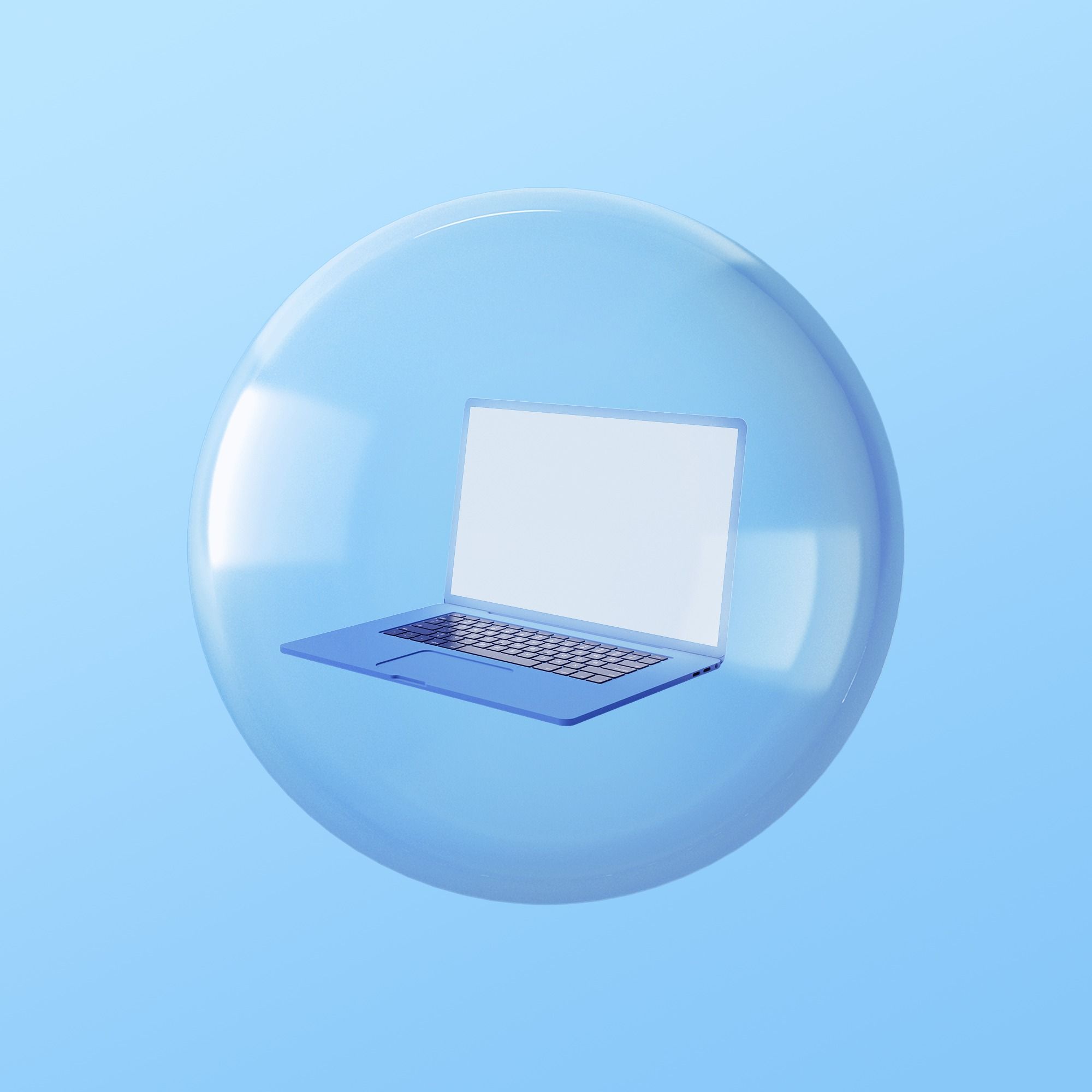






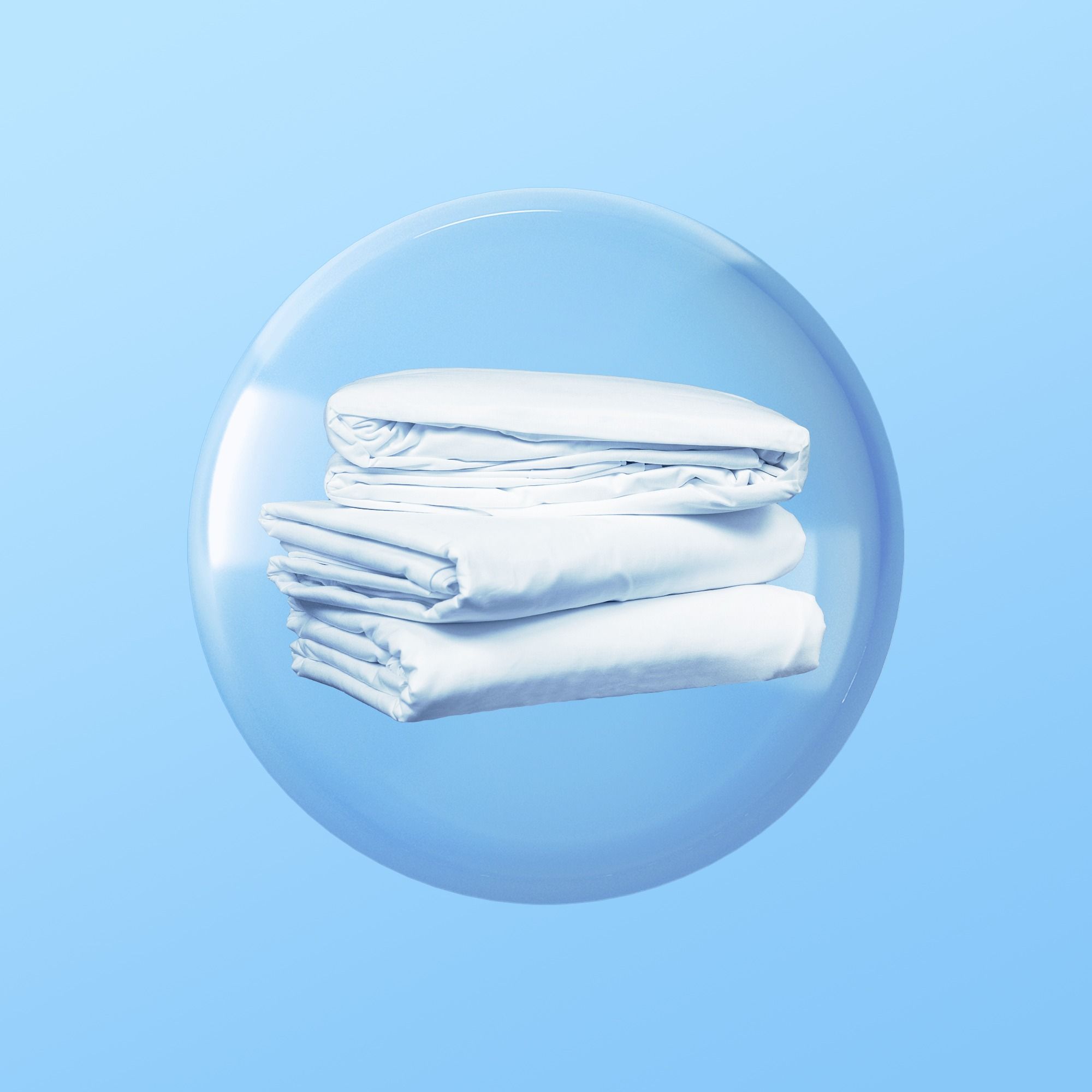


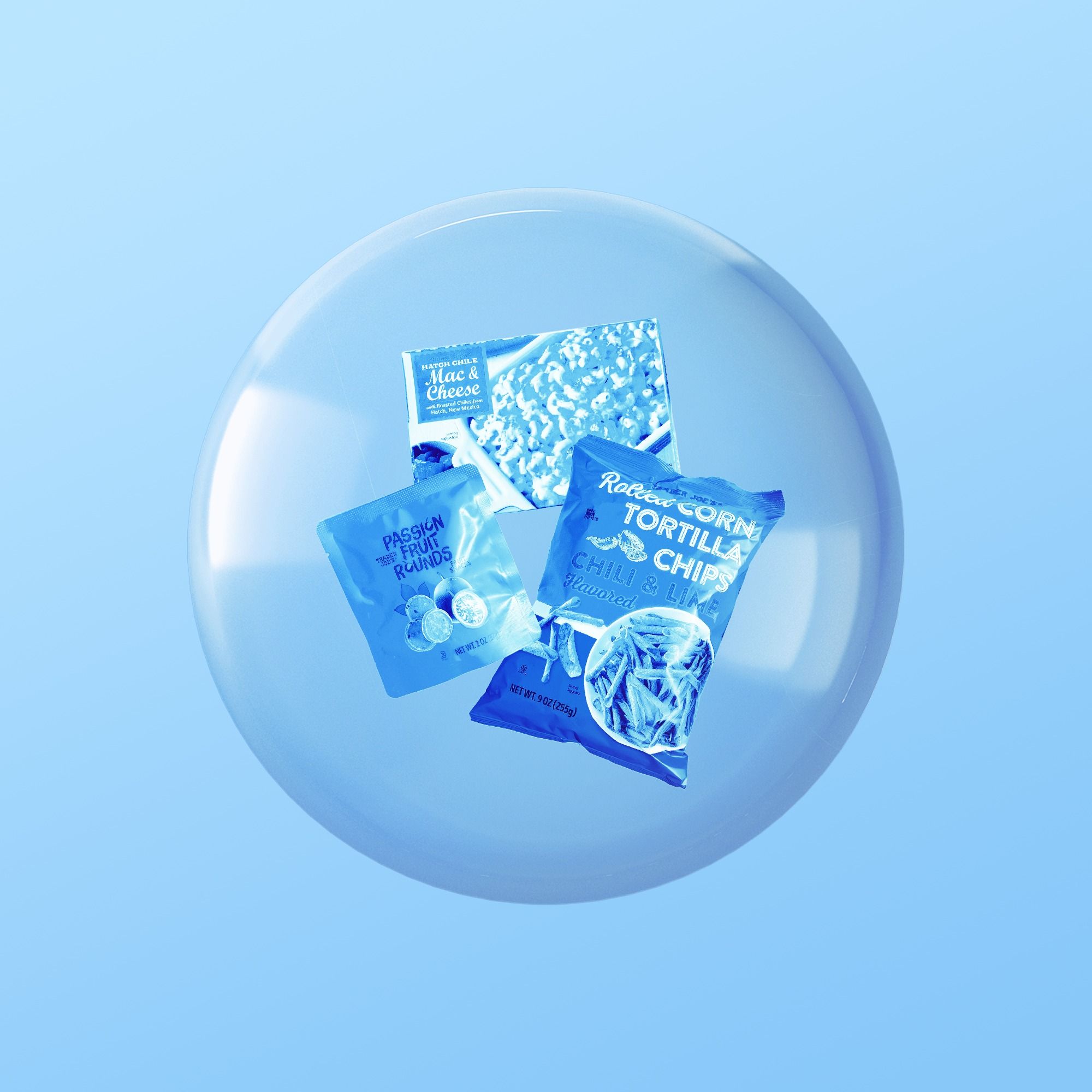


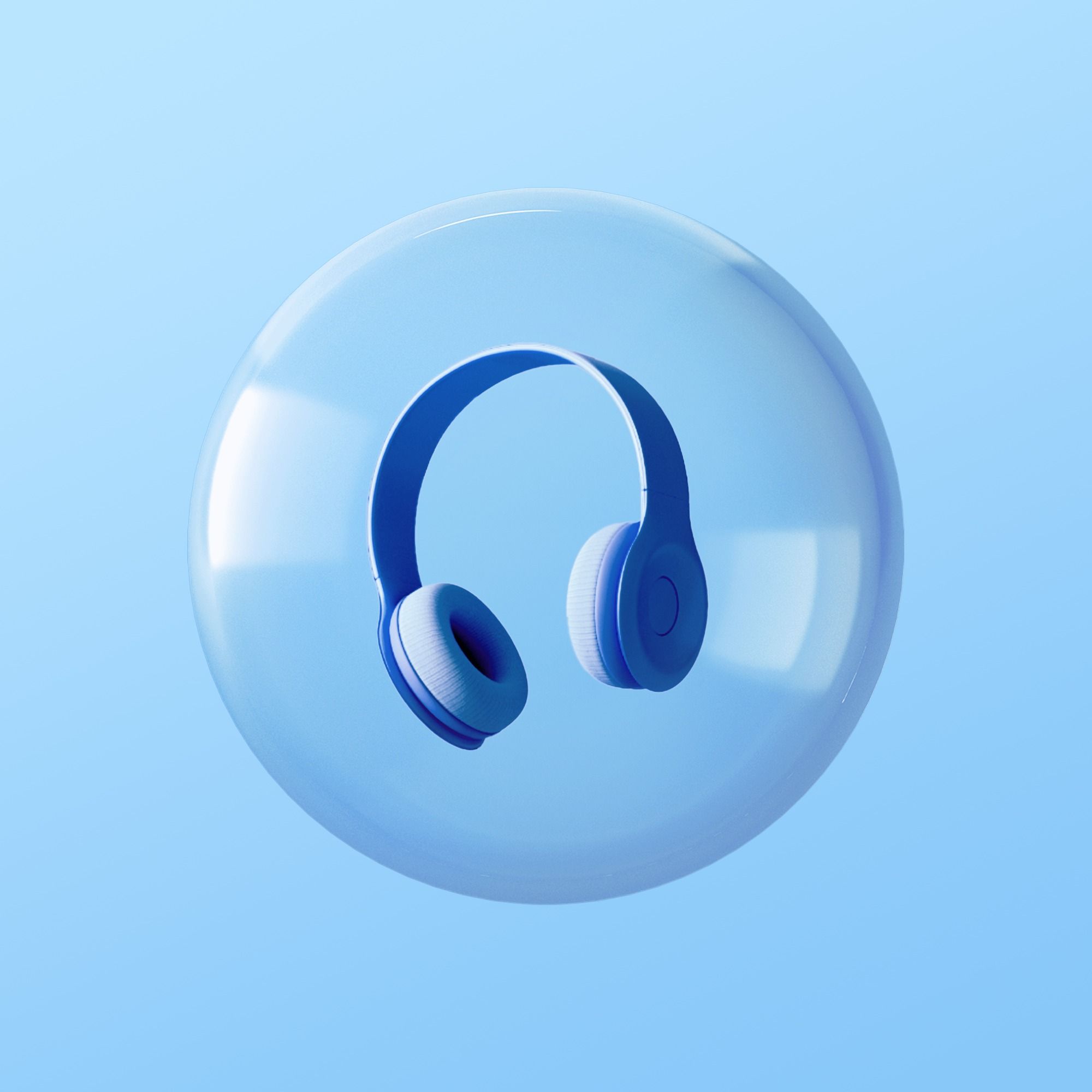
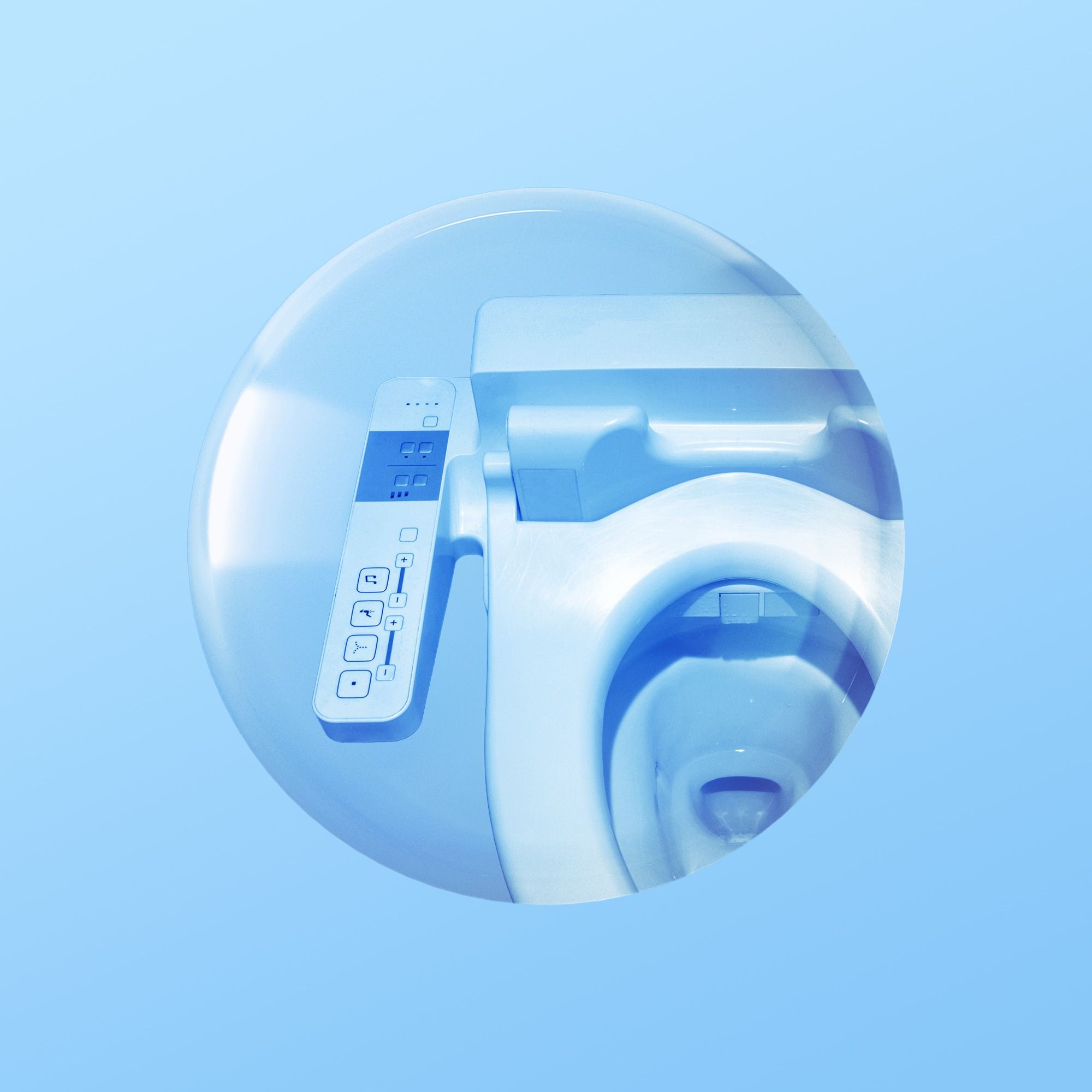
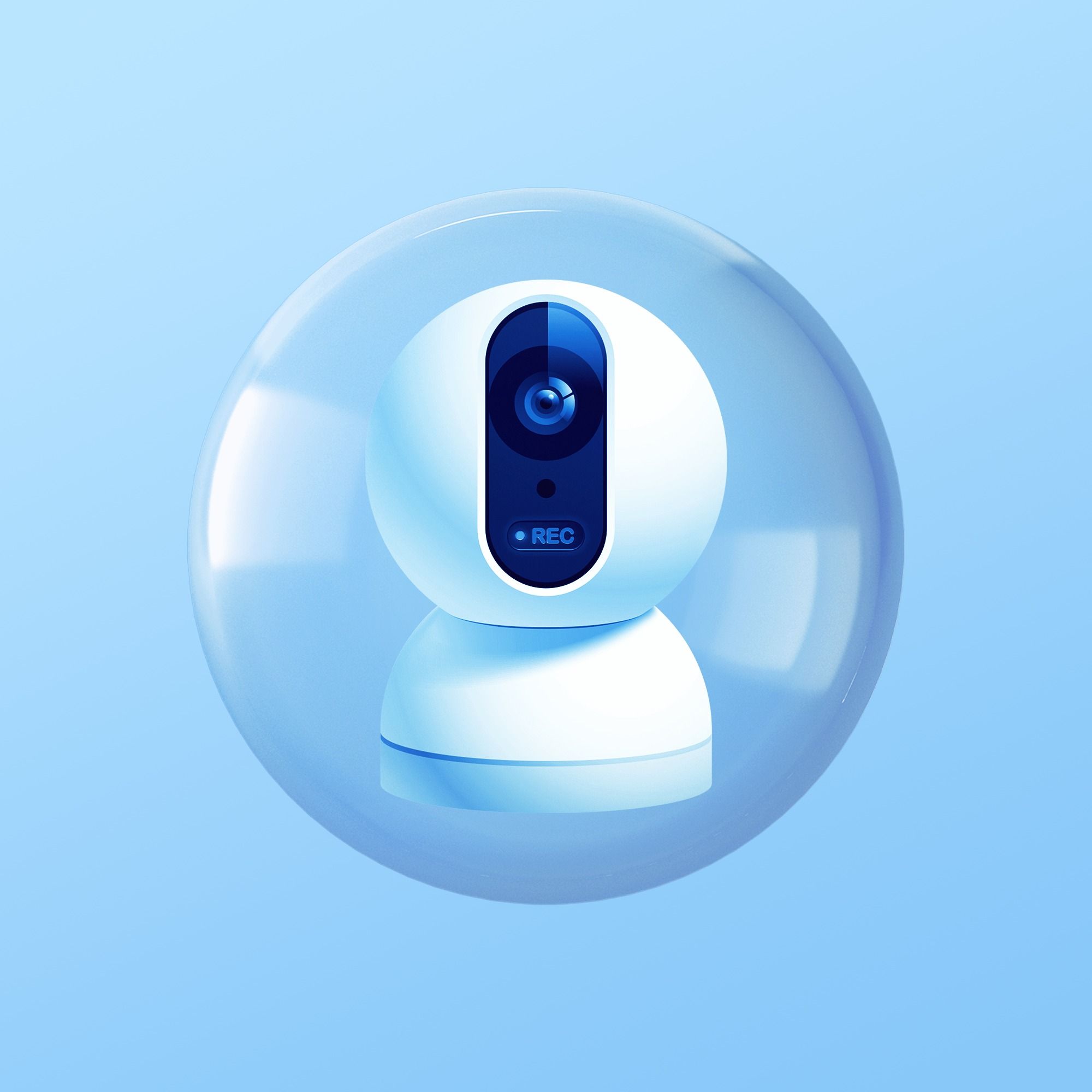



Starting this routine changed my nights completely as I noticed a calmer body and smoother rest. I added grounding bedding gradually and realized the shift during the first week as my sleep cycles felt longer and more stable. My routine improved because I placed best grounding sheets visit here https://finance.yahoo.com/news/consumer-reports-grounding-sheets-leading-115500929.html in the center of my nighttime setup which allowed my body to settle faster. The difference appeared in the mornings as I felt lighter and more refreshed without sudden wake-ups. With steady use the benefits stacked softly and naturally. Anyone wanting deeper rest can feel a similar improvement with a consistent approach.
why does the Wirecutter have sponsorships??? I thought this was journalism!
Really enjoyed this episode. Lots of information. However, wondering why electric mouse traps weren't discussed. Super clean, humane way to deal with rats. We sent along 26 rats this way during an infestation when for some reason they inundated our yard, perhaps to get to the water in the pool. Would never use anything else.
I absolutely love listening to The Wirecutter Show! It’s such a reliable source for in-depth product reviews and practical advice. The hosts always break down the details in a clear, engaging way, making it easier to make smart buying decisions. https://medium.com/@CustomBoxesToronto Whether I’m looking for tech gadgets, home essentials, or just something new to try, this podcast has become my go-to guide. Highly recommend for anyone who loves well-researched, thoughtful recommendations!
Nice song...https://www.mydestiny-card.com
so peaceful and quiet and calm this episode. very creative.
Didn't knew you guys had a podcast! amazing. really like this podcast
I really enjoyed this! The wine stain solution blew my mind!